Anglers Booking Team
The expert copywriters at Anglers Booking have meticulously crafted this article. Our dedicated team of writers provides valuable insights and information to enhance your angling experience.
 12 minutes read
12 minutes readCape San Blas, a hidden gem nestled along the renowned "Forgotten Coast," is a string of barrier islands stretching from Port St. Joe to Apalachicola.
This locale is a stunning haven, inviting all to uncover its marvels. Anglers from across the globe are lured to Cape San Blas for its crystal-clear waters, which rank among the purest in Florida, making it a haven for fishing enthusiasts.

The diverse fish species inhabit these waters, from Tarpon and Snook to deep-sea dwellers. We will delve into their characteristics in the guide ahead. We aim to kindle your interest in Cape San Blas, whether you are a first-time visitor or a seasoned angler, by painting a vivid picture of the fishing experience.
Here, you can immerse yourself in the tranquility of the surroundings, leaving your worries behind. So, stay tuned and prepare to be enthralled!
Imagine stepping into a candy store as a child! That's the sensation you'll experience when encountering the rich variety of fish species inhabiting Cape San Blas. Whether you're a local or migratory species fan, you'll find something here to tantalize your angling taste buds!
Some fish come and go according to their seasonal movements, while others are present all year round. Find out below what the native species are in Cape San Blas.
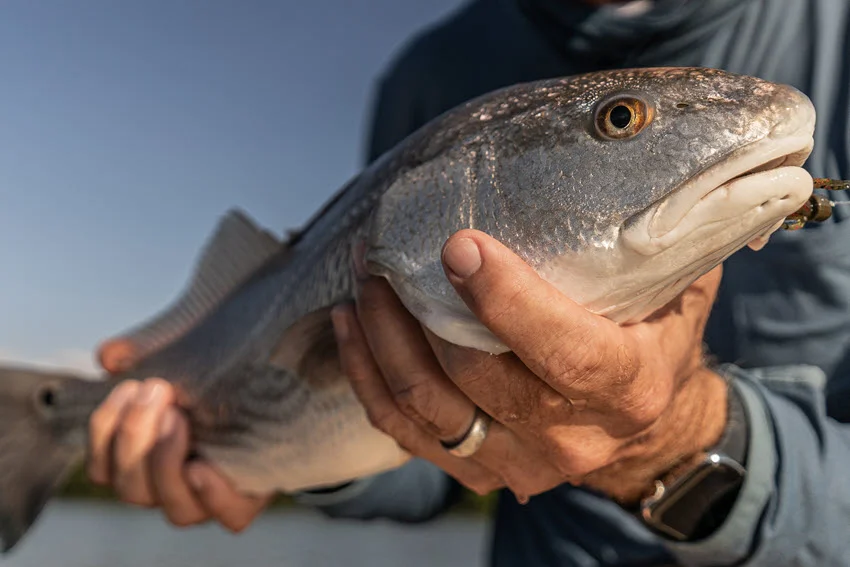
Redfish are one of the top inshore species in Cape San Blas, easily recognized by their reddish-bronze color and signature black tail spot. They roam oyster beds, flats, and marshes, feeding on crabs, shrimp, and baitfish. Most Redfish here range from 18 to 40 inches, with larger breeders showing up seasonally.
During warm months, they gather in shallow areas, offering great sight-fishing opportunities. In cooler seasons, they shift to deeper channels where trolling works well. Redfish strike aggressively and fight hard, making them a favorite for year-round action.
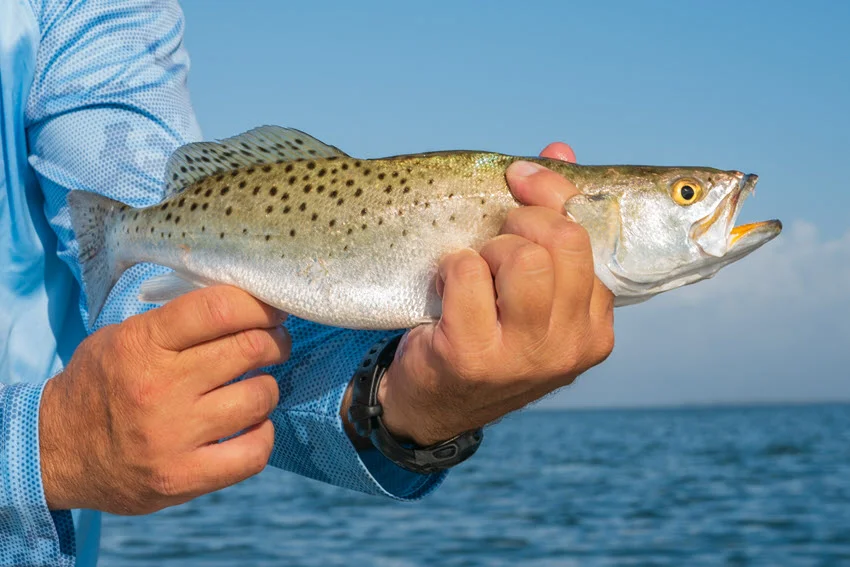
Speckled Trout are one of the most recognizable inshore fish in Cape San Blas, known for their silvery bodies dotted with black spots and soft yellow mouths. They favor clean waters near sandy bottoms and oyster bars, often found in schools. Most range between 14 and 25 inches, though trophy fish can reach 30 inches.
They are pretty picky but also voracious, so it is best to catch them on mullets, pinfish, or artificial baits using various techniques, such as standard casting and drifting. Spotted beauties can also be hunted throughout the year, although they are most active in spring and fall. Finally, besides its beauty and a touch of mysticism, this fish is also delicious, which increases demand.
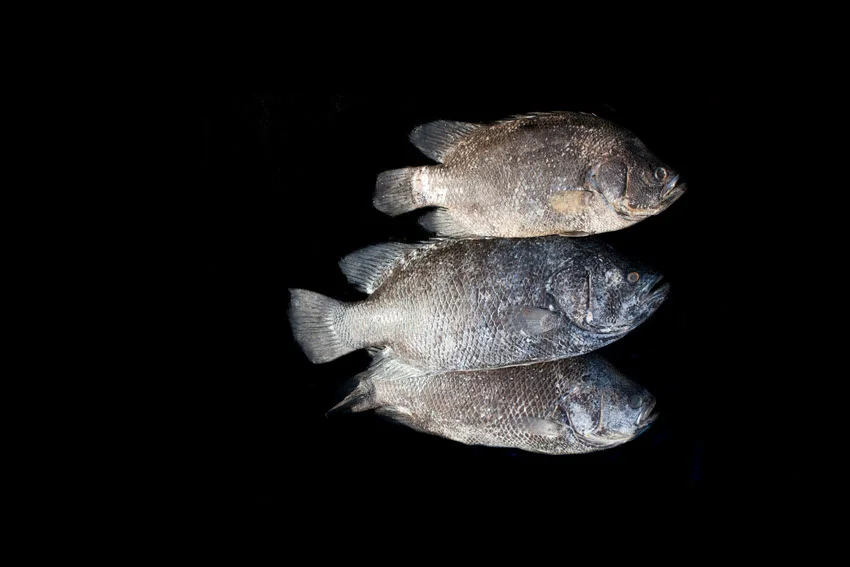
Tripletail are a unique and highly sought-after species in Cape San Blas, easily identified by their rounded shape, mottled coloring, and three-lobed fin appearance. They often hover near the surface around buoys, markers, or floating debris. Most range from 15 to 30 inches, but larger specimens can exceed that.
If you plan to cast for Tripletail, it is best to do so during the summer and spring when they are most active around structures and looking for food. Tripletail fish have a somewhat unusual appearance, often brightly colored from black to reddish-bronze to yellow or colorful – an exciting and impressive species, almost as if drawn by a highly imaginative painter.
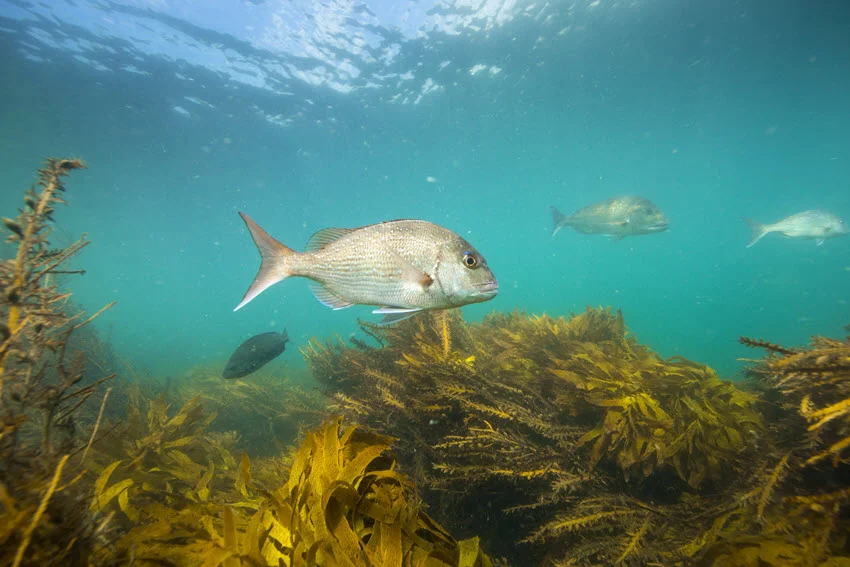
Various species of Snapper roam these waters, including the likes of Red Snapper, Mangrove Snapper, and Lane Snapper, and the characteristics that unite them all are vibrancy and liveliness. They hide around structures, reefs, wrecks, and underwater formations. The biggest and most sought-after is the Red Snapper, which can grow to over 40 inches long, while Mangrove and Lane Snapper typically range from 10 to 20 inches.
The warmer months are the best time to catch Snapper in San Blas because they are most active and abundant. However, they can still be found throughout the year. Anglers typically use artificial lures or live bait such as sardines, small fish, or squid to attract them. While bottom fishing close to reefs is widespread, light tackle and vertical jigging can also be effective for catching Snapper.

Grouper are powerful bottom-dwellers known for their bulky frames and sudden, aggressive strikes. In Cape San Blas, common species include Red, Gag, and Black Grouper. They often range from 20 to over 40 inches, with Red Grouper frequently exceeding 50 pounds in deeper waters.
The Cape San Blas season is in the warmer months when these fish are most active. Even then, it is best to catch them on live bait, such as mullets or squid, and artificial baits, such as crankbaits and swimbaits. Due to their size and rough behavior, they are hunted almost exclusively for trolling and bottom fishing.
In specific time cycles, migrant species swim into Cape San Blas waters for better food, water, or spawning. Keep reading to find out when some of them are here.
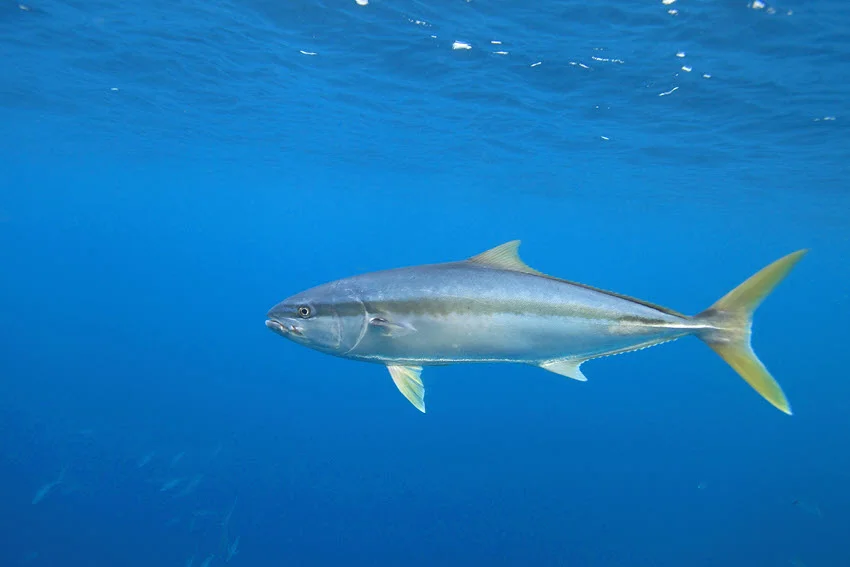
Amberjack is a ruthless species with a robust appearance characterized by amber fins. They are a large and awkward species that can grow to 60 inches long and weigh over 100 pounds. Amberjack fishing season at Cape San Blas is in the warmer months, from spring to early fall, when they migrate through these waters.
You'll mostly find them around offshore structures such as wrecks, reefs, and oil rigs. To cast them, you will need heavy tackle and sturdy equipment to handle the sheer power of these fish. Using live bait such as Blue Runners, Jacks, or squid is best. As far as techniques go, vertical jigging and drifting near structures are the most effective.

Kingfish, demons of speed and beauty of the sea, you are always an inspiration, even for anglers exploring the waters around Cape San Blas. Also known as King Mackerel, this species makes incredible jumps and shows a voracious appetite. They can grow up to 50 inches in length and are not uncommon. Their bodies are streamlined, blue-green, with silver sides and a distinct row of dark spots on the sides.
The official Cape San Blas Kingfish fishing season is in the warmer months, from spring to early fall. Their habitats are areas around ridges, ledges, and rock structures. The primary technique is trolling, combined with live bait such as Blue Runners, cigars, or even wire leaders. Kingfish will test you, whether your confidence in your self-esteem or self-pity, that already depends on you; anyway, it won't make your job any easier.
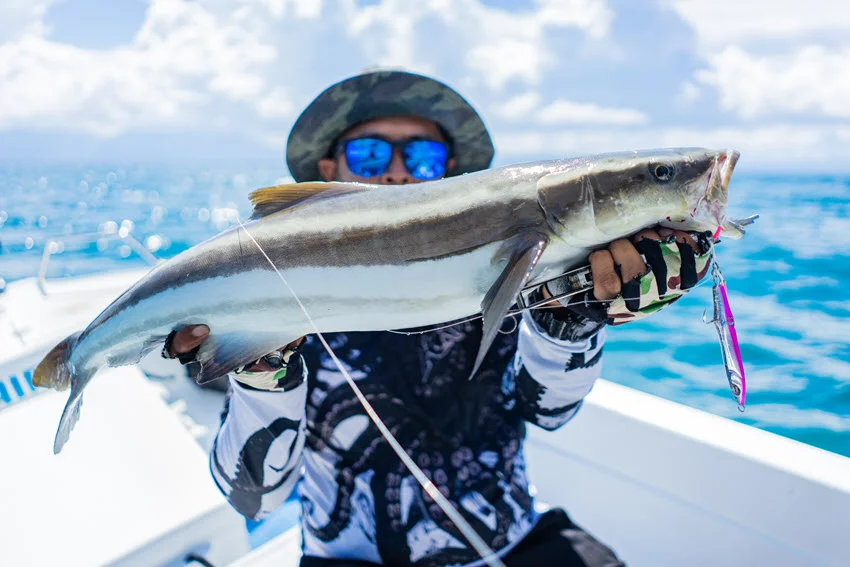
Cobia, also known as Ling or Lemonfish, is a large species that resembles sharks. It has an elongated body, broad heads, and dark side stripes. In Cape San Blas, cobia migrate several times, but the peak season is considered spring and fall. They are solitary and wary; you will mostly find them around objects such as reefs, wrecks, and buoys.
Anglers commonly catch them on live bait such as mullets or eels, using trolling, or sight fishing. They scan the water's surface for the recognizable shape of these large fish and throw bait directly at them. Although it seems absent, Cobia is a fierce fighter, and once caught, it will show all the splendor of its fighting powers.

Mahi Mahi, also known as Dolphin with a Twist, is a striking fish with brilliant shades of green, yellow, blue, and gold spots scattered over its body. It can vary significantly in size, ranging from 20 to 50 pounds. In addition, Mahi Mahi stands out for its exceptional speed and agility, allowing it to act as if flying through the water.
The prime season for Mahi Mahi fishing on Cape San Blas is from spring to early fall, and their preferred habitats are nearshore structures, weed lines, and floating debris. Most are hunted using trolling techniques, such as natural baits like ballyhoos or artificial lures like skirts and plugs. Mahi Mahi has the unique appearance of an unusual fish that works miracles with its complex body and is a testimony to the wonder and power of nature and life.
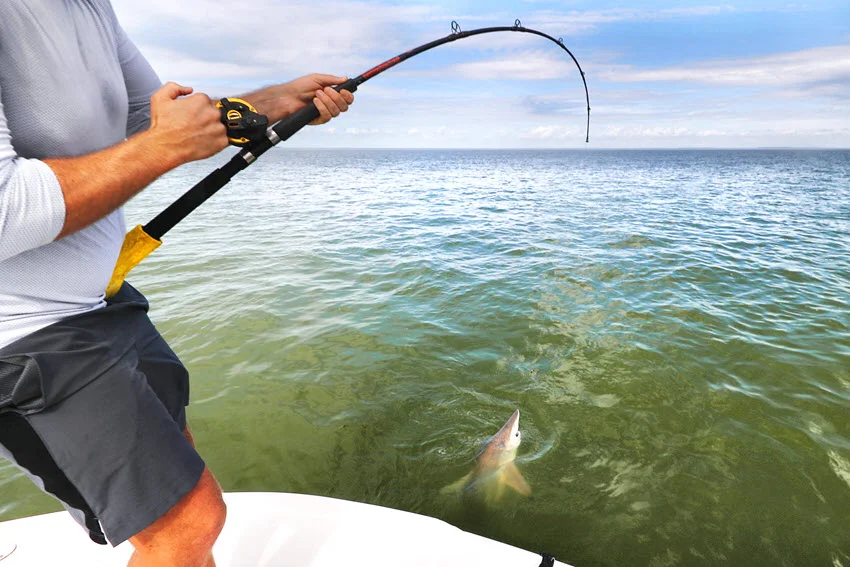
Sharks are the apex predators of Cape San Blas waters, with species like Bull Shark, Hammerhead, and Blacktip commonly encountered by anglers. These powerful fish can range from smaller 3 to 5-footers to giants exceeding 12 feet in length. Their presence around reefs, wrecks, and buoys adds a thrilling element to any offshore trip.
Sharks are most active in warmer months and often follow baitfish migrations. Heavy-duty rods, wire leaders, and large natural baits are essential when targeting them. Hooking one offers a serious test of strength, endurance, and skill, perfect for thrill-seeking anglers.
We have introduced you to the most prominent fish species in the waters of Cape San Blas, and now it is the turn of the most popular locations where you can meet these fish and many others!

This overwhelming beach stretches along the calm shores of the one and only Gulf of Mexico, which means that all the typical and not-so-typical Floridian fish species are here! Cape San Blas Beach is a famous and well-preserved white sand beach. The coast is spacious enough to cast a line and is quite close. Moreover, it stretches the entire length of Cape San Blas.
Inshore, you can fish for Trout and Redfish, and if you go further, with a bit of luck, an Amberjack or Tuna will bite your hook, or even a Shark. You can launch a kayak or a boat to go surf fishing; the azure shores will surely blow you away, and with good energy comes a happy catch!

Cape San Blas Lighthouse is located in an active and colorful coastal area. It is about 130 years old and towers over the region as a protector. Here, you can also catch Pompano, Whiting, and Redfish, which often visit the lighthouse's shallows. For those willing to explore further and more profoundly, there are the Speckled Trout, which frequently patrol the nearby flats and canals.
Nearby amenities in Port St. Joe provide anglers with easy access and a variety of shops offering all the necessary fishing supplies. The lighthouse's peaceful environment evokes Sunday peace and a relaxed day with the family or by yourself.
The Cape San Blas Reef is an expansive reef system with various fish, including Snapper, Grouper, and Amberjack. It is an excellent location for bottom fishing or drifting because it allows anglers to explore the reef's secrets and hollows. It is approximately 10 miles offshore, and you will need a boat or charter a vessel.
This is a beautiful location that truly inspires everyone who comes here. Of course, the skill of sailing and navigation in such waters is a must. If you know that, this dreamy location will seem like a fishing dream come true.
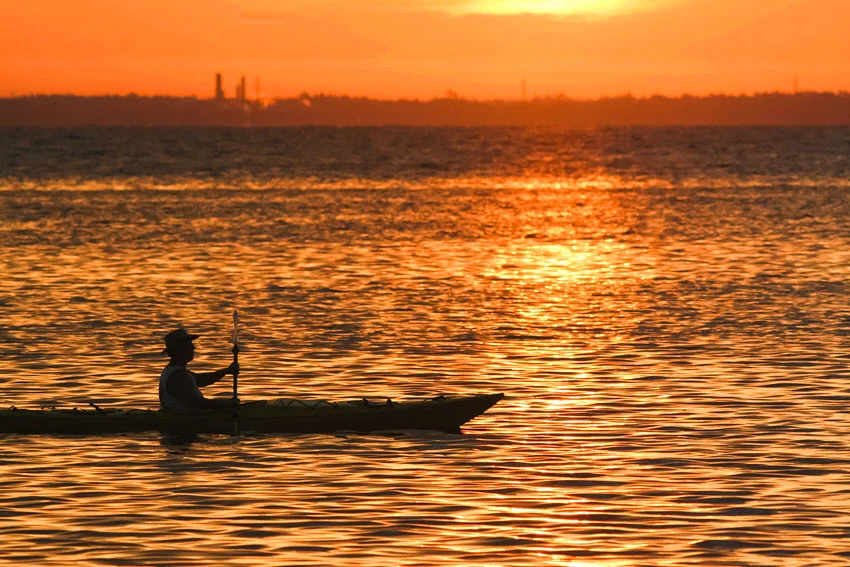
For fans of shallows and miles of flats, St. Joseph Bay is a visual and fishing paradise. It is associated with the most beautiful embodiment of peace and transparent emerald water, a true jewel. Living seagrass beds create a thriving ecosystem suitable for species such as Flounder, Tripletail, Redfish and Speckled Trout.
You can fish by kayak, from a small boat, from the shore, or walk in the beautiful shallows and cast. In addition, it is an excellent location for a day trip with the family since there is something magical and mystical here.
Whatever type of angler you are, whether you like to experiment with techniques and combine different elements or stick to one method, you will find your place here and, undoubtedly, fellow anglers who agree with you. Let's learn more about the most popular fishing techniques in Cape San Blas.
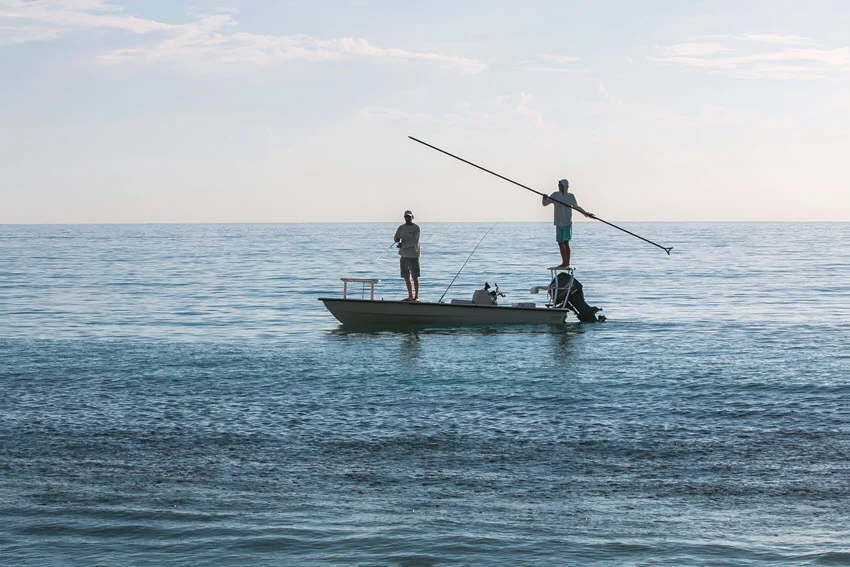
Sight fishing is an exciting and attractive technique that does not lack complexity. It is used in crystal clear shallows and flats, where it is easy to spot fish. It involves visually sighting the fish from the boat or while wading, followed by precise casting and bait presentation. You need light but flexible poles and polarizing glasses to neutralize the sun's glare.
This technique requires very sharp senses, speech perfectly tuned to the environment, and the skill of reading the signs of the fish's presence or activity to make a covert approach as practical as possible and avoid scaring the fish. On the coast of Cape Sna Blasa, sight fishing is mainly for Cobia, Redfish, and Tarpon.
Accuracy and timing are of the essence, as any sudden movement or disturbance can cause the fish to flee. Successful sight fishing requires patience, practice, and understanding of fish behavior.

Bottom fishing is a superior and highly effective technique for targeting fish species that live not only on the bottom of the ocean but also on various structures and obstacles that lead to the bottom. It involves using weights with natural or artificial baits, which are then lowered to the seabed or to various underwater structures to attract fish such as Amberjack, as well as Snapper and Grouper, fish that are often confused despite their distinct differences.
When anglers find a spot they suspect is holding a walleye, they anchor their boat or drift over the structure while placing bait rigs on the bottom. Patience is critical as you must wait for the fish to bite and for signs of baiting. Depending on the size and type of fish, strikes can vary from subtle taps to strong pulls.
Bottom fishing is a versatile approach that allows for creativity and improvement and caters to anglers of all skill levels.
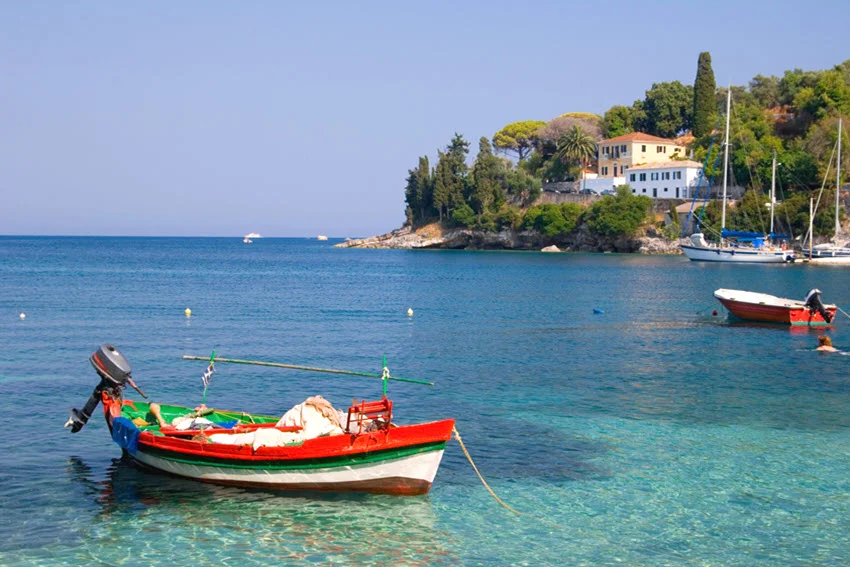
From the side, you would think that drift fishing is static and just rocking the boat, but it is a very intense, dynamic technique. It allows multiple species to be targeted at once while allowing the boat to drift with the natural currents and winds as anglers cast their bait. It is mainly applied over vast flats, canals, and coastal reefs, where they target Trout and Redfish.
It involves using a variety of baits, including live baitfish, shrimp, or artificial baits such as soft plastics and lures. It is essential to know how to adjust the speed and direction of the drift to cover the productive areas and maximize the chances of meeting the desired fish.
Drift fishing is an exciting technique that combines tranquility and dynamism while allowing anglers to explore different habitats.
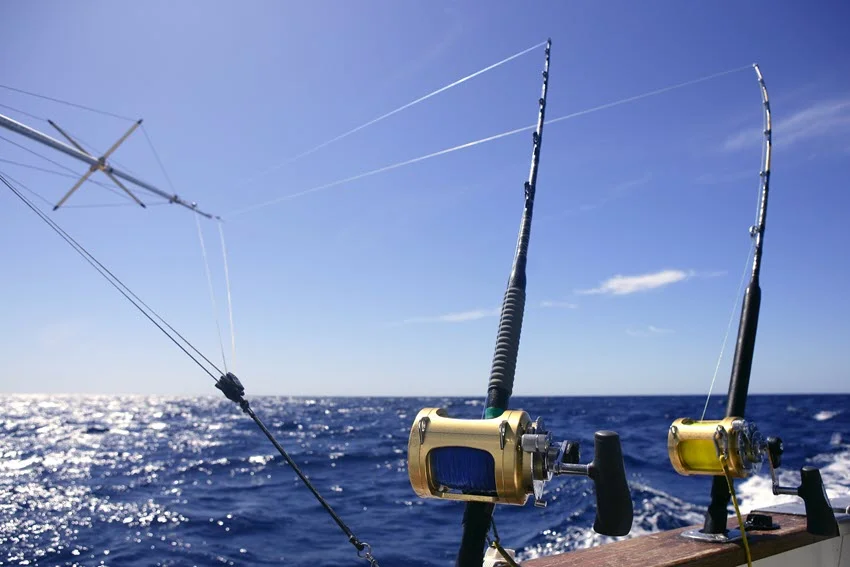
Trolling is the primary technique for catching pelagic species such as Mahi Mahi, Kingfish, Sailfish, Sharks, and Marlin. For all those beasts, you need solid and stable equipment that won't let you down and allow you to prove yourself. Trolling involves pulling lines or lures behind a moving boat while maneuvering at different speeds.
Trolling also allows anglers to present their lures at different depths and distances from the boat while at the same time dictating the rhythm by steering the boat. You can use support brackets, descents, and planing boards, allowing anglers to spread their lines over a vast water area.
Many factors must be considered, including the speed adapted to the target species, the weather conditions, and the type of bait used. That's why it requires experienced anglers and captains with the physical strength to deal with the size and jumps of pelagic fish.
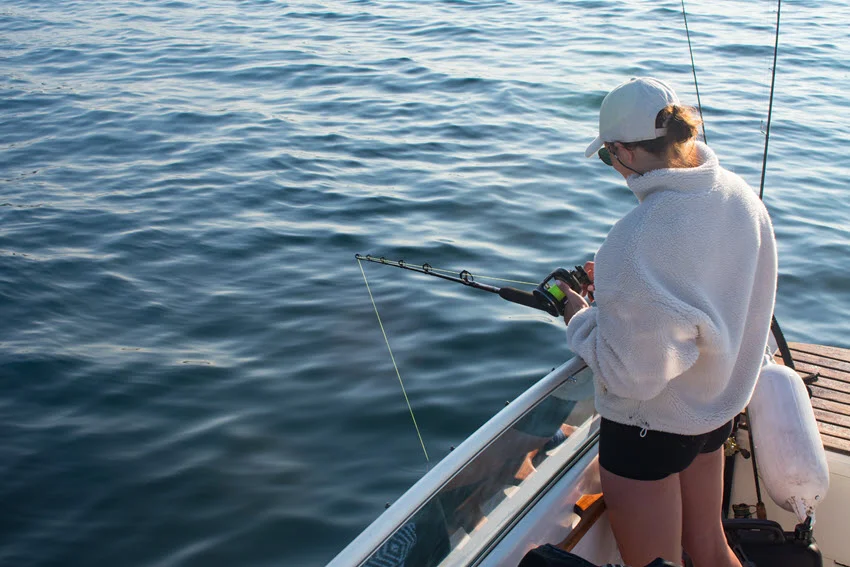
Jigging is another dynamic fishing method loved by anglers in Cape San Blas who target species such as Amberjack, Snapper, and Grouper. Jigging vertically moves a weighted lure or spoon up and down through the water column to attract fish. The primary habitats for jigging anglers are reef crossings, wrecks, and underwater structures. Jigging allows the bait to reach different levels of the underwater landscape, into hidden corners, and wherever a potential catch hides.
Depending on the fish, anglers often use yo-yo jigging, butterfly jigging, and speed jigging to convey different actions and movements to their lures. Establishing a good speed and rhythm of jigging movements is crucial for accurately imitating the behavior of wounded prey. This is a fun but demanding technique, requiring skill, patience, and finesse to catch fish successfully.

Understanding fishing regulations in an area is crucial for protecting fish populations and ecosystems and promoting responsible angling practices.
Anglers Booking Team
All pristine areas with living creatures are susceptible and vulnerable, including the ocean world of Cape San Blas. Therefore, all anglers must comply with applicable regulations and rules and have valid fishing licenses. It is essential to familiarize yourself with the area before any fishing activity.
In Florida, fishing regulations are administered by the Florida Fish and Wildlife Conservation Commission (FWC). Consequently, everyone attending to fish in Cape San Blas must possess a valid Florida fishing license, which can be obtained through the official FWC website or from authorized agents.
Also, if you use a particular technique or hunt a species that is often protected or for which hunting is usually prohibited, you must have permits. Licenses are required for residents and non-residents and may vary by age and validity duration.
Additionally, it is crucial to frequently apply the catch-and-release practice, which helps protect and preserve the environment.
Finally, we won't exaggerate if we say that Cape San Blas has everything an angler needs, from abundant species and beautiful coastlines to endless exploration, and where you can lose yourself in a gorgeous, healing nirvana! Also, our guide has given you enough information and encouragement to dare to visit and cast a rod somewhere from the shores or offshore of the Cape San Blas coast.
As you already know, we are always here for you. Write your suggestions, ideas, stories, and fishing experiences. We are always happy to read, respond to, and share them. And who knows, we can agree on joint fishing in Cape San Blas! Enjoy fishing anytime, anywhere!

The expert copywriters at Anglers Booking have meticulously crafted this article. Our dedicated team of writers provides valuable insights and information to enhance your angling experience.
Embark on unforgettable fishing adventures with us at Anglers Booking.
book your charterOctober 17, 2025
October 15, 2025
October 10, 2025
October 11, 2025
October 4, 2025
September 29, 2025
September 25, 2025
September 21, 2025

You're now part of our exclusive community. Get ready for premium content and updates straight to your inbox.
close
Subscribe to our newsletter and receive a selection of cool articles every week.
Please enter a valid email address.

Be the first to know when we're back in action.
Please enter a valid email address.
Leave a Comment
Your email address will not be published. Required fields are marked *
Thank you for your comment! It has been submitted for review and will appear on the site shortly.